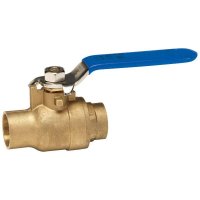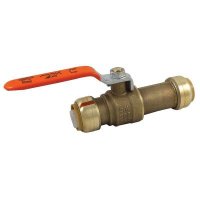dosby
DIY plumber
As part of my basement renovation, I am thinking of opening up an unfinished closet which has a main water pipe with a valve. I will be finishing the concrete wall with 2x4's, insulation, and drywall.
There is a main water line there, however, which I am planning to hide behind an access panel.
Is there a regulation as to what size/material that panel should be? I was thinking just enough to be able to operate the main valve as well as pressure relief valve - thinking of moving the main valve up the stack closer to PRV.
I am also thinking of replacing the valve with a ball valve and rotating the handle to make it parallel to the wall or even facing so that the handle could be completely concealed in the wall instead of sticking out. The pipe itself is currently at 3.5" from the concrete wall so it could be covered with drywall Ok.
The house is 1979, so pipes are relatively new and should not crumble.
Anything wrong with the plan?
Pics attached.
Thx


There is a main water line there, however, which I am planning to hide behind an access panel.
Is there a regulation as to what size/material that panel should be? I was thinking just enough to be able to operate the main valve as well as pressure relief valve - thinking of moving the main valve up the stack closer to PRV.
I am also thinking of replacing the valve with a ball valve and rotating the handle to make it parallel to the wall or even facing so that the handle could be completely concealed in the wall instead of sticking out. The pipe itself is currently at 3.5" from the concrete wall so it could be covered with drywall Ok.
The house is 1979, so pipes are relatively new and should not crumble.
Anything wrong with the plan?
Pics attached.
Thx


